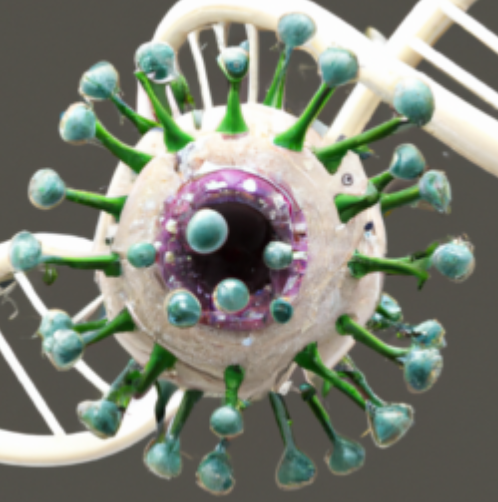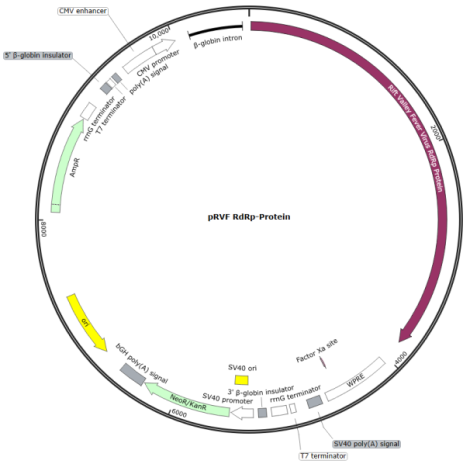Virongy는 혁신적인 바이러스 연구 및 진단 기술을 개발하는 미국의 바이오기업으로,
바이러스 감염 연구와 치료법 개발을 위한 선도적인 솔루션을 제공합니다.

제품 설명
Bunyavirus Protein Expression Vectors
제품 번호
Viral Species / Reporter Gene / Size 선택
제품 특징
Bunyaviruses include Crimean-Congo hemorrhagic fever (CCHF) and Rift Valley Fever (RVF) viruses. The Crimean-Congo hemorrhagic fever viral protein expression vectors are derived from NCBI reference sequences NC_005303.1 (S genome), NC_005300.2 (M genome), and NC_005301.3 (L genome). Rift Valley Fever (RVF) viral protein expression vectors are based on the BJ01 Isolate with the following reference sequences KX632068.1 (S genome), KX632067.1 (M genome), and KX632066.1 (L genome). All of the expression vectors are codon optimized for mammalian cell expression. Choose to add a GFP or his tag to the C terminal end of any protein. A CMV promoter is used for mammalian cell expression and the backbone contains a selection marker for Geneticin (G418). All non-tagged glycoprotein expression vectors have been functionally validated using pseudotyped viral particles.
Background:
Bunyaviridae is a family of enveloped RNA viruses transmitted by ticks, mosquitoes, and livestock animals. They are responsible for various human and animal diseases, including Crimean-Congo hemorrhagic fever and Rift Valley Fever. While CCHF virus infection causes severe viral hemorrhagic fever outbreaks, with a case fatality rate of up to 40%, RVF can result in a 50% chance of death with severe symptoms such as loss of sight, severe headaches and confusion, and bleeding together with liver problems.
Bunyaviruses are single-stranded negative-sense RNA viruses with 3-segmented genomes: small (S), medium (M), and large (L). The 3-segmented genomes encode viral nucleocapsid protein (NP) involved in transcription and replication, glycoprotein precursor generating two structural membrane proteins (Gc and Gn) and nonstructural proteins (GP38 and NSm), and RNA-dependent RNA polymerase (RdRp) proteins, respectively. Bunyaviruses enter the host cell via receptor-mediated endocytosis through the surface glycoprotein Gc, which is responsible for binding to the cellular receptors. Upon attachment, Gc responds to the reduced pH of endocytic compartments with a conformational change that results in a fusion loop, allowing it to insert into the endosomal membrane. Gc then folds back on itself, forcing the cell membrane (held by the fusion loop) and the viral membrane (held by a trans-membrane anchor) against each other, resulting in fusion and releasing the viral genome into the cytoplasm. Some of the receptors facilitating the viral entry that have been described include clathrin-dependent endocytosis, 3 integrins, nucleolin, and DC-SIGN (a C-type lectin restricted to interstitial dendric cells and certain tissue macrophages).
Example plasmid map:

Don’t See the specific protein of interest? Email: info@virongy.com to ask us about a custom expression vector order.
Additional attachments:
References
Related links:
Virongy Biosciences의 모든 제품을 만나 보세요!
Products
Services
Viral Neutralization Assay Services
Virongy Biosciences - Exclusive Distributor in South Korea "Morebio" 한국 독점 대리점 "모아바이오"